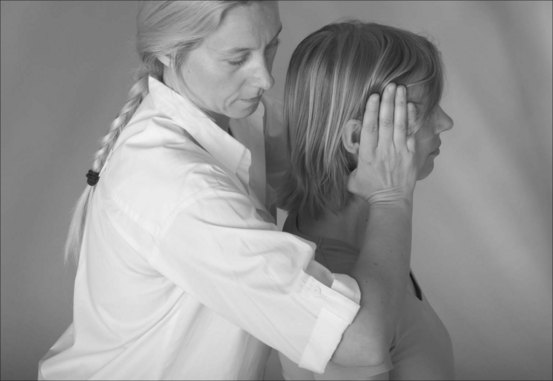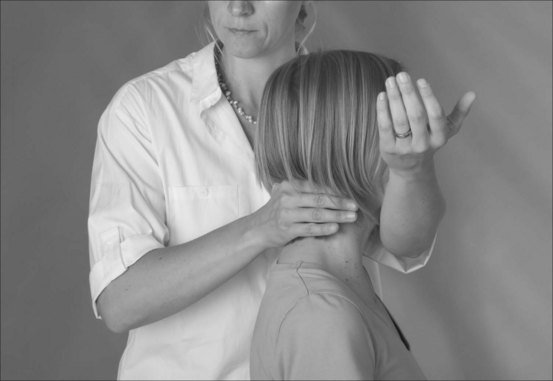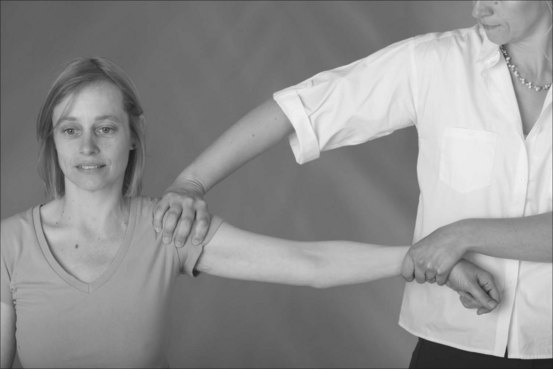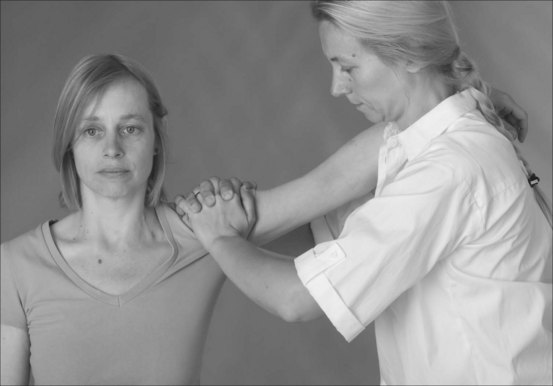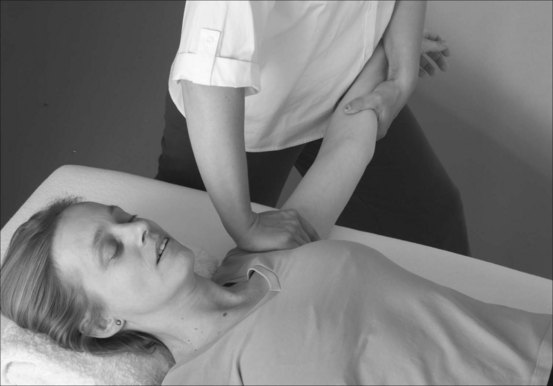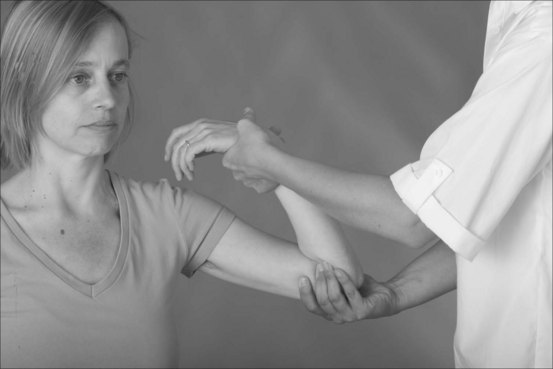CHAPTER 6 Passive movements
Ba shen fa stretching/traction 
Ba shen fa involves stretching the channel sinews and creating space for joints.
Clinical application and therapeutic effects
Applying Ba shen fa to the neck
Seated position – version 1
Repeat this 2–3 times. In between each stretch, apply some Na fa, Rou fa or other technique to relax the neck muscles. (Fig. 6.1)
Seated position – version 2 
Repeat this 2–3 times, relaxing the neck muscles with basic or compound techniques. Anything based on Rou fa or Na fa does this job very well. (Fig. 6.2)
Applying Ba shen fa to the lower back
Lying down supine position
Ask your patient to take some deep breaths into their belly. Working with their breath, slowly and steadily lean backwards, keeping your arms straight and using your body weight to gradually create the lumbar traction. With each exhalation, relax your body weight back a little more until there is a natural resistance. Hold the stretch for about 30 seconds, then gradually release (Fig. 6.3). If you are working with an assistant they can either just stay put, fixing the armpits, or they can apply counter-traction by keeping their arms straight and leaning their body weight back.
Repeat 2–3 times. Try using Dou fa in between each stretch to release the hips.
Applying Ba shen fa to the shoulder
There are several methods of stretching the shoulder. The three most common versions follow.
Straightforward shoulder traction in a seated position
Hold the stretch for 10–30 seconds. Encourage the patient to use their breath to help to release feelings of stiffness, restriction and discomfort. To encourage further release of the sinews and joint, sway or gently rock the arm back and forth during the stretch. (Fig. 6.4)
Shoulder traction with the patient’s arm over your shoulder
In between stretches, try applying some Rou fa to the shoulder, keep your fingers interlaced and use the heels of your palms. Cuo fa is another useful technique to use between stretches. (Fig. 6.5)
Shoulder traction with the patient supine
This method is similar to straightforward seated traction. With your patient lying down supine, abduct their arm, holding either the top or the anterior aspect of the shoulder with one hand and their forearm with your other hand. Fix the shoulder and gradually pull the forearm to create traction. Hold for about 20 seconds and then release. (Fig. 6.6)
Applying Ba shen fa to the elbow
Other than the general method mentioned above, there is another useful version of Ba shen fa for the elbow. With your patient either sitting or lying supine, flex their elbow and hold it underneath with one hand. Take hold of their forearm just above the wrist with your other hand and lean your body weight backwards to create the traction. (Fig. 6.7)
Common uses
When applied to the neck it is very useful as part of treatment for headaches and migraine.
Tips for practice
• Use Ba shen fa towards the end of treatment. Relax, warm and dredge the relevant channel sinews with other techniques first.
• The traction applied is increased gradually and evenly, avoiding any sudden rough movements.
• Hold the stretch for long enough for it to be therapeutically effective: 20–30 seconds is ideal.
• This technique must be applied with great care to articular deformity and rigidity.
Stay updated, free articles. Join our Telegram channel

Full access? Get Clinical Tree


